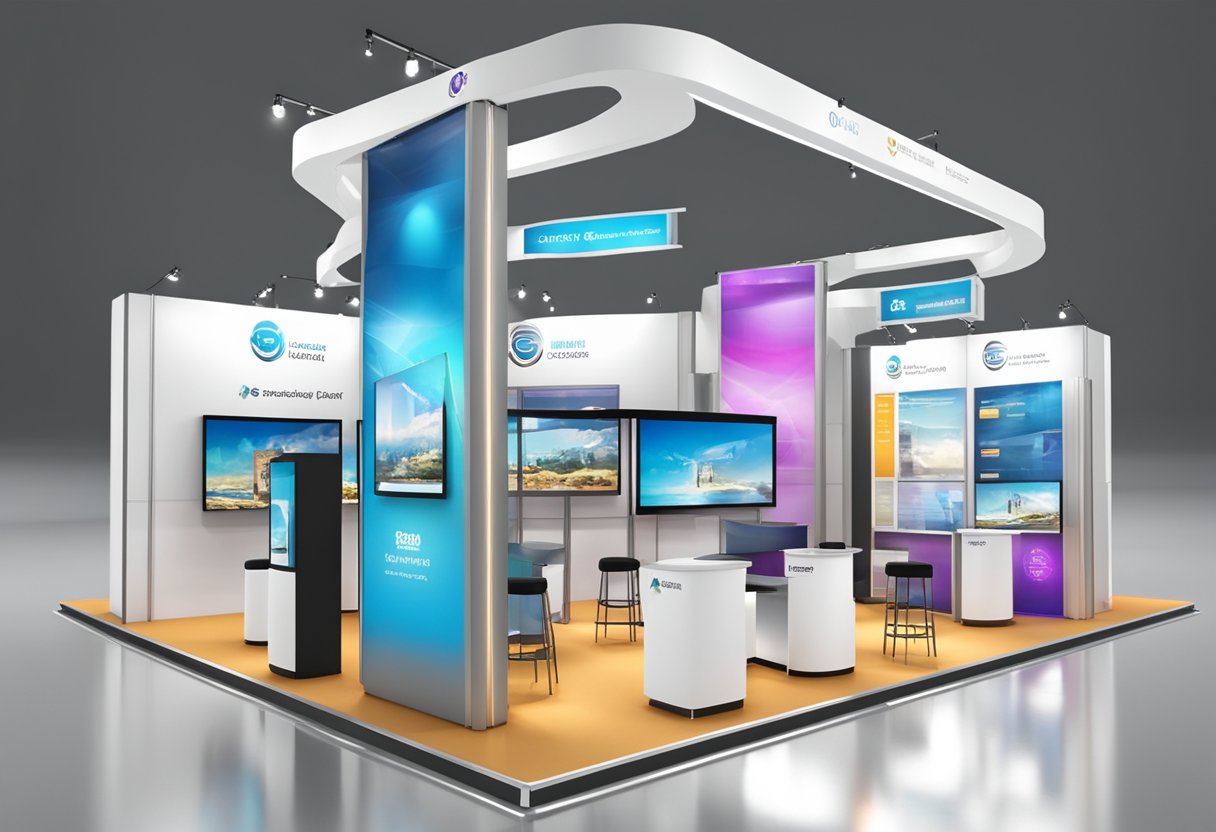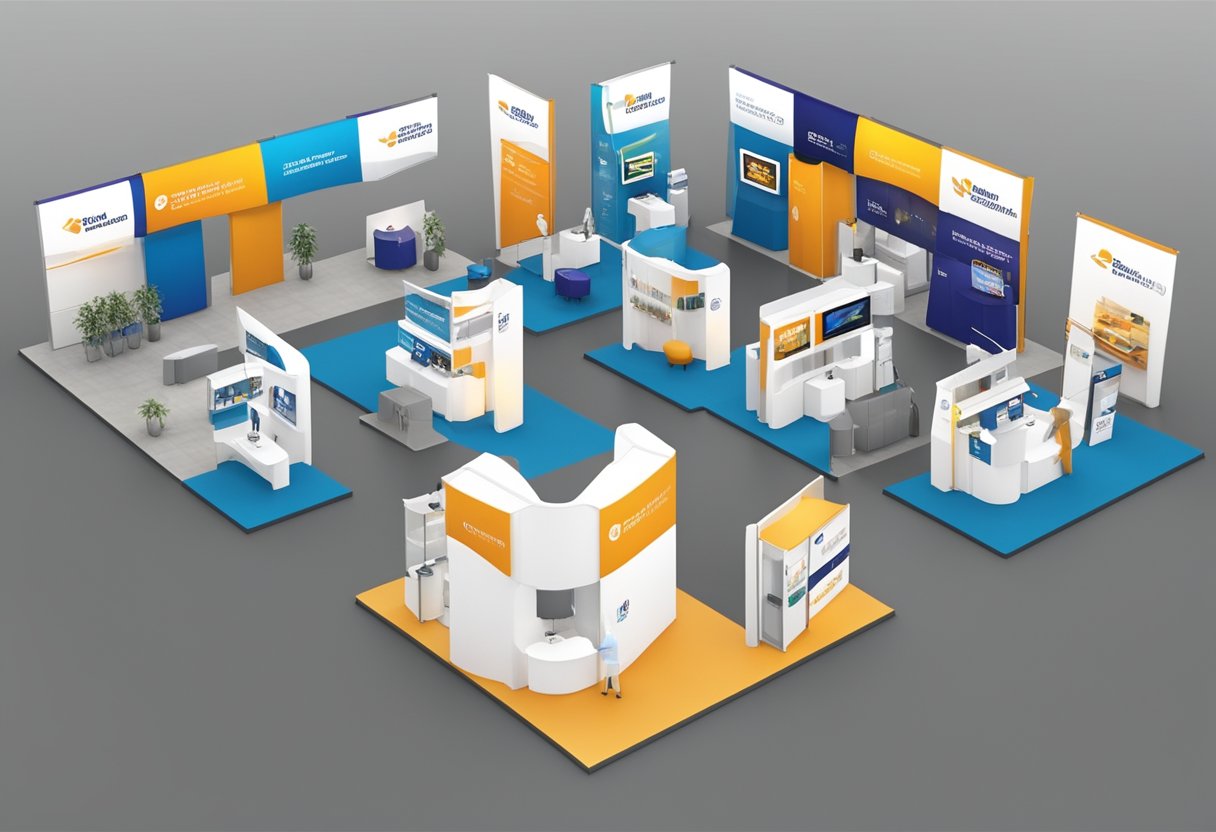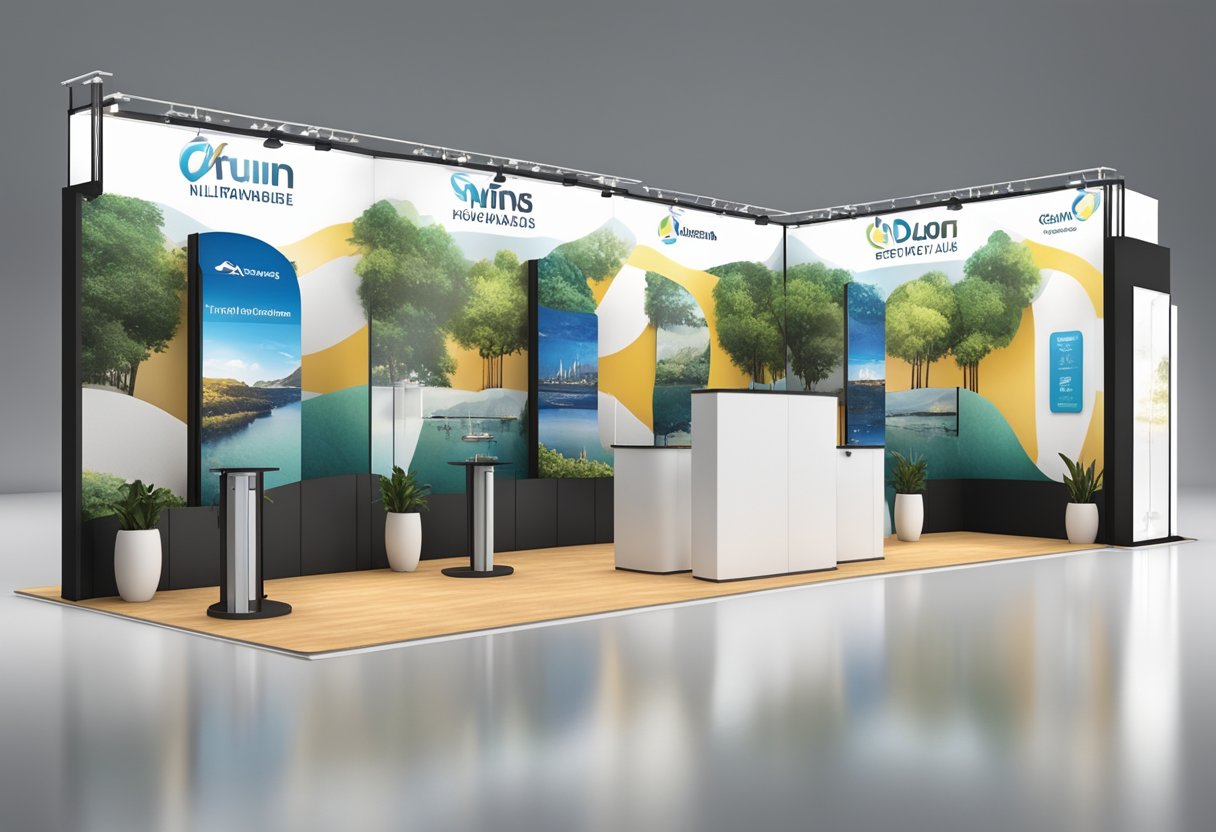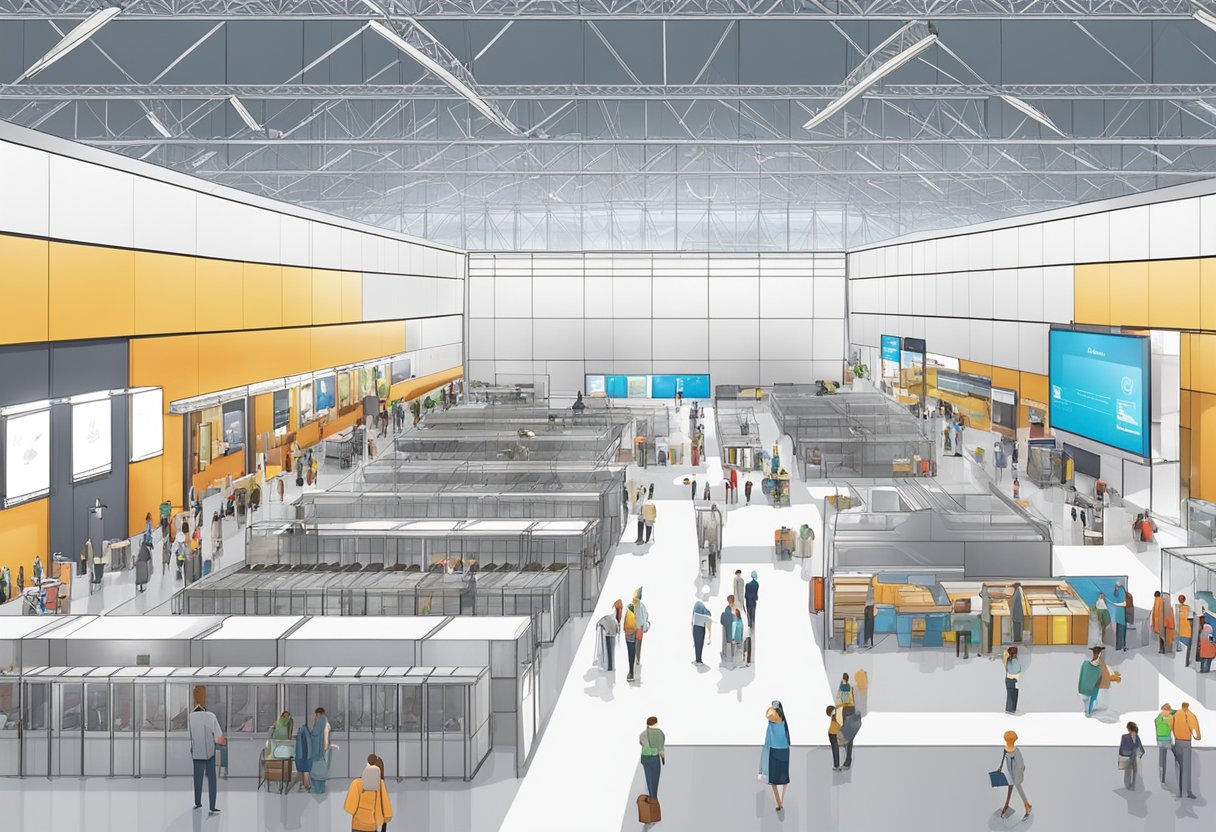Modular Displays for Trade Shows: Maximizing Impact and Flexibility
Modular displays have revolutionized the way businesses present themselves at trade shows. These customizable solutions offer a unique blend of flexibility, brand reinforcement, and sophistication. They cater to the distinct needs of exhibitors by providing a cost-effective, dynamic way to showcase products and services.
Companies can choose from an array of designs ranging from compact inline displays to expansive island exhibits, each aimed at maximizing the impact of their presence at trade events.

The advantages of modular displays are numerous, including ease of transportation, quick setup and dismantling, and the reusability for multiple events which aids in achieving a sustainable exhibiting practice. More importantly, they offer the customization that brands need to stand out in the competitive environment of a trade show floor.
With state-of-the-art graphic design capabilities and an array of additional branding elements and accessories, modular displays are engineered to capture attention and make a lasting impression.
Key Takeaways
- Modular displays provide versatile and customizable options to enhance brand presence at trade shows.
- They offer practical benefits like cost-effectiveness, ease of transport, and reusability.
- Attention to design and high-quality graphics are critical in creating impactful modular displays.
Benefits of Modular Displays
Modular trade show displays are innovative solutions that offer flexibility and cost-savings for exhibitors. They can be tailored to meet the unique requirements of different trade shows while maintaining a consistent brand image.
Versatility and Reconfigurability
Modular displays exemplify versatility with their ability to be easily reconfigured to fit various spaces and exhibit designs. Accessories and customization options allow exhibitors to expand or alter their display for each event.
These reconfigurable systems ensure that, whether you’re occupying a compact 10×10 foot space or a sprawling 20×20 foot area, the exhibit can adjust flawlessly.
Cost-Effectiveness
Investing in a modular display proves to be budget friendly due to the reusable nature of the components, offering an affordable custom solution for exhibiting. They can be used across multiple shows, allowing for significant cost savings over time.
Moreover, the option to add to or alter the existing setup for different shows eliminates the need for whole new exhibits, further enhancing their cost-effective appeal.
Durability and Storage
Manufactured with longevity in mind, modular displays are typically durable and can withstand the rigors of frequent use. Many come with a lifetime warranty, demonstrating their built-to-last quality.
When it comes to storage, these exhibits are designed for efficient disassembly, ensuring that they take up minimal space and remain in good condition for their next use.
Ease of Assembly
Modular trade show displays are designed with ease of assembly in mind. The easy-to-assemble nature of these systems means they can be set up without professional help, saving on labor costs and time.
This simplicity extends to the disassembly process, making modular displays an extremely convenient option for companies that frequent trade shows.
Types of Modular Displays

Modular displays offer versatile and sophisticated options for exhibitors looking to create an impactful presence at trade shows. These displays are designed to be reconfigured and reused, which allows for a cost-effective and eco-friendly approach to trade show exhibiting.
Brightline & Straightline Modular Displays
Newest on the scene, the Brightline and Straightline modular designs offer lightweight, push together frames that are simple to assemble with no tools. These frames offer single and double sided silicone edged fabric graphics, and come in custom padded shipping cases. The frames and panels can be combined in a multitude of different configurations. Made by the same manufacturer, the Brightline displays use the same frames as the Straightline, but with built-in LED lighting, to provide single sided and double sided modular displays.
Hybrid Pro Modular Exhibits
The Hybrid Pro Modular Exhibits incorporate a blend of materials such as metal, fabric, and other components. They offer a sleek, professional appearance with the flexibility of various designs that fit different space requirements, from inline to island exhibits.
Vector Frame Modular Displays
Vector Frame Modular Displays are known for their clean lines and contemporary look, utilizing push-fit fabric graphics and aluminum frames. They are lightweight, easy to transport, and can be assembled without tools, offering a convenient solution for exhibitors.
Linear Modular Displays
These modular exhibits typify a balance between form and function, emphasizing strong visuals and user-friendly features. Linear Modular Displays are known for their streamlined designs that efficiently utilize booth space and often include integrated lighting and shelving options.
Classic Modular Line Exhibits
Classic Modular Line Exhibits stand out with their unique, geometric designs and the ability to create dynamic and customizable booth layouts. Composed of snap-together extrusion sections, they provide a versatile structure that can be reconfigured for a range of display footprints.
Designing Your Modular Display

Creating an impactful modular display requires careful consideration of graphic design, structural elements, and the incorporation of dynamic lighting. Each detail plays a vital role in ensuring your brand stands out.
Graphic Design and Branding
A modular display should feature high-quality graphics that convey your brand’s message clearly. Effective graphic design is crucial, as it should be visually striking while maintaining brand consistency.
Whether using large format prints or digital media, the inclusion of branding options like logos and color schemes is imperative for recognition.
Customization and Accessories
Customization is a hallmark of modular trade show booths. Exhibitors can personalize their space with various accessories—from counters and shelves to racks, tables, and literature holders.
Each component should serve both an aesthetic and functional purpose, ensuring a custom appearance while supporting the display’s overall message and utility.
Layout and Expansion
The layout of a modular display is designed to be versatile and reconfigurable to adjust to different spaces, ranging from a unique display to a larger island display.
Exhibitors have the option to expand or alter the layout to fit the event scale, making it easier to adapt to a variety of trade show environments.
Lighting and Visual Appeal
Incorporating the right lighting can dramatically enhance the visual appeal of a display. Strategic use of spotlights or backlit displays can underline key branding elements and draw attention to products or messaging.
Furthermore, well-executed lighting schemes can create a welcoming atmosphere, encouraging visitor engagement.
Logistics of Modular Displays

The logistics of modular displays for trade shows involve coordination, efficiency, and effective handling of exhibit materials. Key factors include ensuring items are transported safely, assembled and disassembled with ease, and stored properly to maintain their condition.
Shipping and Transportation
Transporting a modular trade show display requires careful planning. It’s crucial to choose packaging that buffers and protects the exhibit’s building blocks during transit.
The ideal packaging should be durable to withstand shipping conditions and designed for the specific dimensions and weight of the portable trade show exhibit. Reliable freight services with experience in handling trade show materials are an asset, ensuring the booth space components arrive on time and undamaged.
Installation and Dismantling
Easy-to-assemble systems are a significant advantage of modular displays. Detailed instructions should accompany each exhibit, allowing a swift setup and breakdown process.
This not only minimizes the time and labor needed but also lowers the risk of damage during the installation and dismantling phases. Often, modular displays can be assembled with simple tools or no tools at all, making them a time-efficient choice for exhibitors.
Storage Solutions
After the trade show, modular exhibits must be stored in a way that preserves their quality for future use. Storage solutions should provide defense against environmental factors like moisture and dust.
Many modular display kits include storage containers that double as shipping crates, enhancing their utility. For businesses that lack storage space, some service providers offer dedicated storage facilities, ensuring that the components of the booth space are ready for the next event.
Marketing and ROI

In the domain of trade shows, exhibitors meticulously develop their marketing strategies to bolster their brand’s reputation and maximize their event ROI. These marketing efforts are tailored to align displays with event goals and determine the success of their investment through measurable ROI metrics.
Trade Show Marketing Strategy
For exhibitors, the trade show provides a platform to tell their brand’s story and engage with potential clients. Planning is paramount; it involves setting clear objectives, understanding the target audience, and allocating an appropriate budget.
Each element of the modular display should serve a strategic purpose, whether it’s to demonstrate product value or to reinforce brand identity.
Effective strategies often incorporate engaging and interactive components to draw attendees, such as live demonstrations or digital content, which can significantly increase visibility and lead capture.
An effective trade show marketing strategy encompasses pre-event promotions, interactions during the event, and post-event follow-ups. This strategic trifecta ensures a cohesive brand message and maximizes lead generation opportunities.
Measuring Success and ROI
Determining the ROI of trade show involvement is crucial for exhibitors to assess the efficacy of their marketing investment.
Key metrics include lead generation numbers, cost per lead, and sales conversion rates. Businesses meticulously calculate these metrics to discern the most rewarding trade shows for their investment and adjust their strategies accordingly.
Exhibitors also evaluate qualitative metrics, such as customer engagement levels and feedback, to gauge their brand’s impact on attendees beyond just the numbers.
By both quantifying the leads and sales, and qualifying the brand enhancement, they gain a comprehensive view of their trade show ROI.
Engagement tracking technologies like RFID and analytics on digital interactions offer data-driven insights, making the evaluation of the trade show performance more accurate. For more on the importance of these metrics, American Image Displays provides examples of trade show ROI metrics that businesses can use to figure out the events that offer the best returns.
Additional Elements and Services
When considering modular displays for trade shows, additional elements and services play a critical role in enhancing the overall exhibit experience. These extras can provide interactive opportunities, expert design customization, and specialized configurations that cater to both retail and event environments.
Interactive Elements
Trade show attendants expect not just to see, but to engage with exhibits.
Interactive elements such as kiosks equipped with touch screens or tablets invite attendees to dive deeper into what a company offers.
Enhancing a display with monitor mounts allows for seamless integration of multimedia presentations, further engaging potential clients.
Design Services
Professional design services are integral to ensuring that display kits meet the brand’s specific needs and are crafted using state-of-the-art equipment.
Companies like Nimlok and Classic Exhibits allow American Image Displays to streamline the exhibit design process, providing access to tailored graphics and branding elements. These transform standardized aluminum structures into unique inline displays and island exhibits.
Retail and Specialized Exhibits
Modular displays extend far beyond the trade show floor. In retail spaces, they offer the flexibility to highlight products effectively within a variety of floor plans.
Specialized exhibits might incorporate banner stands or create enclosed rooms within larger spaces.
Modular display kits can be reconfigured for use in various events, making them a versatile solution for businesses seeking to create a lasting impression.
Conclusion
Modular displays have proved to be a significant asset for brands showcasing at trade shows. They offer a blend of flexibility, cost-effectiveness, and customization that traditional booths often lack. These displays allow companies to creatively and efficiently utilize their exhibit space.
By adopting modular displays, a company can repurpose and adjust their setup to different trade show environments. This adaptability is a practical advantage for brands that participate in various events with different space constraints.
Moreover, modular displays serve as a canvas for a company’s branding. They can be tailored to reflect the brand’s unique identity and messaging, establishing a strong presence on the trade show floor. This customization enhances brand recognition and helps to create a memorable visitor experience.
The ease of transport and assembly associated with modular displays also simplifies logistics.
Brands can reduce their environmental impact as these exhibits are often constructed with sustainable materials and designed for repeated use.
In an evolving market, companies leveraging modular displays demonstrate innovation and a commitment to achieving a harmonious balance between standout exhibit design and operational efficiency.
| Advantages of Modular Displays |
|---|
| Versatility in Design |
| Scalability to Event Size |
| Ease of Transport and Assembly |
| Cost-Effectiveness Over Time |
| Enhanced Brand Presentation |
| Sustainability through Reusability |
The strategic use of modular displays can be instrumental in a brand’s success at trade shows, offering both practicality and a strong platform for effective marketing.
Frequently Asked Questions
When selecting a modular display for trade shows, it’s essential to consider various factors such as cost, durability, portability, and setup efficiency.
The following subsections address common inquiries regarding modular displays.
What factors should be considered when choosing a modular display for a trade show?
Choosing the right modular display involves assessing the size of the exhibit, the type of products or services being showcased, and the frequency of trade show participation.
A balance between aesthetic appeal and functionality should be found to maximize the display’s effectiveness.
How can one ensure the durability of a modular trade show booth?
To ensure the durability of a modular booth, look for quality materials and construction. Reputable suppliers often offer warranties or guarantees on their products, indicating confidence in the longevity of their displays.
What are the advantages of portable display cases over traditional exhibition setups?
Portable display cases offer ease of transportation and quick setup, which can significantly reduce the costs and complexity associated with trade shows.
They provide flexibility for various event spaces and can be reconfigured as needed.
What is the typical cost range for modular displays at trade shows?
The cost for modular displays can vary widely, from less than a thousand dollars for simple setups to tens of thousands for larger, more complex designs. Pricing depends on factors such as design intricacy, materials used, and custom features.
How do portable trade show displays compare in versatility to fixed exhibition structures?
Portable trade show displays are highly versatile, being capable of adjustment to different spaces and formats. They can evolve with marketing campaigns and are typically easier to update than fixed structures.
What are some tips for effectively setting up a modular display at a trade event?
Effective setup of a modular display involves planning the layout in advance. Also, ensure all components are accounted for and follow the manufacturer’s instructions. Allocate sufficient time for assembly and consider the flow of traffic through the display area.
